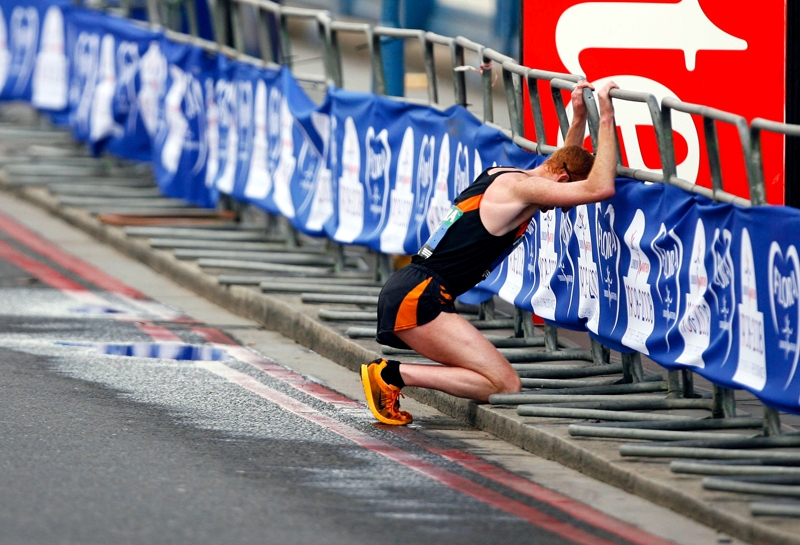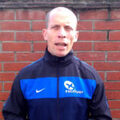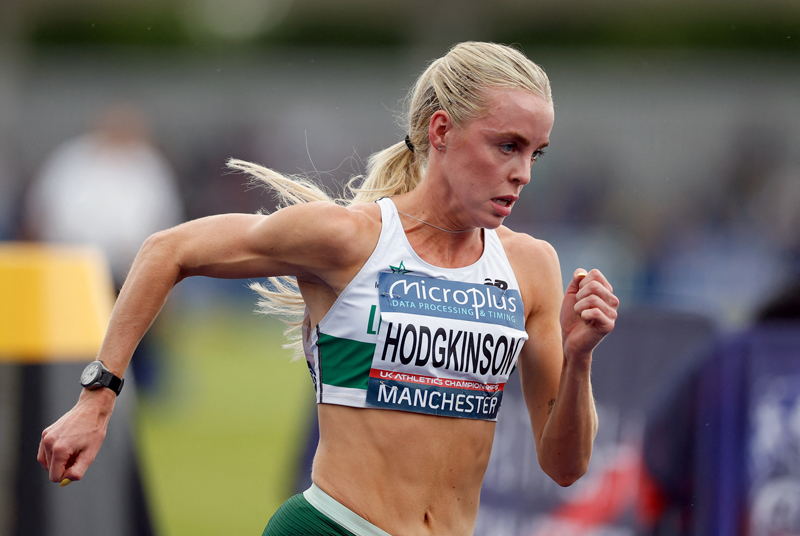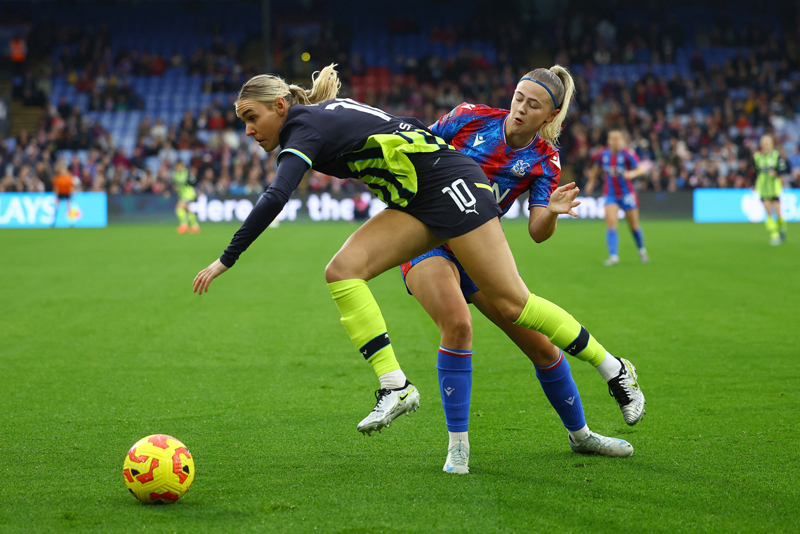You are viewing 1 of your 1 free articles. For unlimited access take a risk-free trial
'Unexplained underperformance syndrome': are you at risk?

James Marshall explores the phenomenon of ‘unexplained underperformance syndrome’ (UUPS) in athletes and provides practical advice to help you avoid or recover from UUPS
If you’re feeling tired, lethargic and your performances are suffering, you may be well advised to cut back on your training and take a rest. This is very sound advice for many athletes. However, it assumes that your problem is doing too much training. But, what if your problem lies elsewhere and the fatigue is unexplainable?
Research into the Unexplained Underperformance Syndrome (UUPS) is limited, but since I wrote my first article for Sports Performance Bulletin about this in 2002BMJ Open Sport Exerc Med 1:e000063. doi:10.1136/bmjsem-2015-000063 (2015), some progress has been made. The purpose of all training is to produce an adaptation within the body. In order to do this, the body must be overloaded in some form: more sets, more reps, more mileage or greater speed for example. Then, recovery must take place so that adaptation can occur.
As the body adapts, so more work can be done and greater overload is required to produce further adaptations. Sometimes – for example in training camps - coaches may plan a sequence of workouts or days that take place before the body has fully recovered and adaptation takes place. This is called ‘functional overreaching’. It is planned, and is (or should be) followed by adequate recovery to allow greater adaptations to take placeEuropean Journal of Sport Science 13(1) p1-24 (2013).
However, badly managed or planned training sessions that result in doing too much, too soon can lead to ‘nonfunctional overreaching’. This can be seen in many situations where coaches have only a short time to prepare athletes for competition, and try to cram in work immediately before an event. If this bad planning continues for several weeks or months, then the short-term non-functional overreaching can lead to overtraining syndrome (OTS – see table 1)European Journal of Sport Science 13(1) p1-24 (2013).
The symptoms of OTS are the same as that for short term overreaching, but the difference is that they are still present even after 2 weeks of full rest (see box 1). For many years, OTS was managed by adjusting workloads. But even with proper planning, some athletes were still underperformingNSCA Journal 4 (4) p. 50-51 (1982) Sports Med 34 p967–81 (2004). This then led to the term ‘unexplained underperformance syndrome’, with the rationale that there had been no obviousillness, injury or overtraining involved to explain the symptomsBr J Sports Med 34 p67–8 (2000).
“The symptoms of OTS are the same as that for short term overreaching, but the difference is that they are still present even after 2 weeks of full rest”
Table 1 Continuum of hard training
| Process | Training (overload) | Intensified training | #colspan# | #colspan# |
|---|---|---|---|---|
| Outcome | Acute fatigue | Functional or (short-term overreaching) | Non-functional overreaching (extreme overreaching) | Overtraining syndrome (OTS) |
| Recovery | Day(s) | Days - weeks | Weeks - months | Months - ... |
| Performance | Increase | Temporary performance decrement | Stagnation decrease | Decrease |
Box 1: Symptoms of OTS

Underperformance syndrome
Since the term UUPS was first coined, more research has led to plausible additional explanations as to why athletes can be underperforming - even though their training plan is managed well. Note that in the UK, UUPS is used, but in the USA and in European research OTS is still preferred. We will use the term related to each piece of research. If you look at the list of symptoms in box 1, you can see that you may experience some of these without being overtrained. Non athletes with minimal training may also suffer some of these symptoms (we shall look at medical conditions in the next section). For example, when diagnosing OTS certain dietary problems have to be ruled outBMJ Open Sport Exerc Med 1:e000063. doi:10.1136/bmjsem-2015-000063 (2015):- Dietary caloric restriction (negative energy balance)
- Insufficient carbohydrate and/or protein intake
- Iron deficiency
- Magnesium deficiency
- Allergies
This may be especially true with endurance athletes who experiment with ‘eat low- train high’ regimes or training whilst fastedEur J Sport Sci 15:3–12 (2015). The risk of carbohydrate CHO restriction regimes is a potential calorie/nutrient deficit, and therefore a higher risk of OTS.
Protein and fatigue
Inadequate protein is another symptom presenting in chronically fatigued athletesBr J Sports Med 32 p25–32, discussion32–3 (1998). The theory is that bouts of intense training reduce the availability of leukocytes and lymphocytes (white blood cells) in the body which are responsible for fighting infection. The good news is that extra protein can help counter these effects. For example, one study found that an additional 3g of protein per kg of body weight per day has been shown to reduce the symptoms of stress and slow down decline in performance in trained cyclists during an intense block of trainingMed Sci Sports Exerc 43 p598–607 (2011).“Trying to eat 3g per kilo of protein weight per day takes extra thought and attention”
In a separate study, the same amount of protein (3g per kilo per day) consumed by cyclists under taking high-intensity cycling resulted in fewer upper respiratory tract infections compared to cyclists who consumed more typical amounts (1.5g per kilo per day)Brain Behav Immun 39 p211–19 (2014). However, these levels of protein intake are quite high for many endurance athletes. Trying to eat 3g per kilo of protein weight per day takes extra thought and attention if the allimportant carbohydrate calories are not to be neglected (see figure 2). For example, a 70kg athlete would need to consume 70 x 3g = 210g of protein to meet this target. Figure 2 below shows an example of what’s involved.
Figure 2

Stress
Another factor in the onset of OTS is the impact of stress, and more importantly the athlete’s perception of stressJ Dance Med Sci 17 p70–8 (2013).There are certain events in life and sport that are known to be more stressful than others, but these events affect people on an individual basisJ Appl Physiol 90 p1770–6 (2001).These stressors have been known to be part of the cause of UUPS in some but not all athletesThe Sport Psychologist 18 p154-171(2004).For example, while one athlete may be able to train and complete their exams concurrently, another athlete will suffer under this combined stress. At a later time however, these same two athletes may experience different stressors such as relationship problems or being away from home, and the situations may be reversed. This often happens with athletes who have a brilliant support network at home, helping to deal with stressful events. But out of the country where there is no support, they may struggle.
Common stressors
Due to the nature of individual responses, the explanation for a negative reaction to stress is mostly discovered retrospectively. It is hard to predict who will suffer, and it is the coach’s job to know their athletes well. The main factors that can be controlled that are likely to have an impact include:- Altitude or heat training
- Time away from home (camps)
- Sudden increase in training load
- Jet lag
- Sleep deprivation
- Dehydration
- Perception of control of events
When to see a doctor
Many of the factors involved in UUPS are beyond the control of an athlete or coach. Some of the most common underlying problems include:- Musculoskeletal injuries - trauma, tendinopathy, hamstring tears etc.
- Pregnancy
- Infection - upper and lower respiratory tract infections, flu-like illness, traveller’s diarrhoea/gastroenteritis, glandular fever (Epstein-Barr virus)
- Asthma Allergies/hay fever
- Concussion
- Stress
- Anxiety
- Depression
- Eating disorders
Depression and chronic fatigue syndrome (CFS) also result in many of the same symptoms (listed in box 1)Chalder, T. Coping with Chronic Fatigue. Sheldon Press: London (2002) Sports Medicine 32(3) p185–209 (2002). Therefore, you should see your doctor if you are feeling lethargic without explanation; you may be suffering from one of these illnesses without being aware. Indeed, depression is more common than you may think in athletes. In a recent study of 162 German athletes, 15% of senior and 20% of junior-professional athletes were found to have depressionJournal of Clinical Sport Psychology 7 p313-326 (2013). This compares to the German population as a whole which has depressions rates of between 6-17%Psychological Medicine, 34(4) p597–611 (2004).
CFS
Chronic fatigue syndrome (also known as myalgic encephalomyelitis (ME) is a much rarer condition that is characterised by severe disabling fatigue, affecting 0.2%–2.6% of the adult populationJournal of Aging Research, Article ID 2497348 (2016). This fatigue is often described as being in the limbs, rather than the whole body and occurs after the mildest form of activityJournal of Internal Medicine, 267(4) p394–401 (2010). It is also linked with sleep disturbance and trouble thinking. This then leads to a cycle of further decline with sufferers losing motivation and the ability to perform even more gentle forms of exerciseJournal of Internal Medicine, 268(3) p265-278 (2010).Previously, CFS was thought to be more psychological in nature, but recent research has shown that there are also physiological factors at play leading to dysfunction even in very mild forms of exercise (rather than the intense training of high athletes)Journal of Neurology, Neurosurgery & Psychiatry, 56(6) p679–683 (1993) Journal of Internal Medicine 257(3) p299–310 (2005) Journal of Neurology, Neurosurgery & Psychiatry, 64(3) p362– 367 (1998) Medical Science Monitor, 16(12) pCR628–CR632 (2010) Open Journal of Internal Medicine, 3(3) p98–105 (2013) BBAClinical,1 p12–23 (2014) International Journal of Clinical &Experimental Medicine, 2(1) p1–16 (2009). What we can say is that because there is so much overlap between the various conditions described above, giving an accurate and detailed description of your symptoms (and your symptom history) to your doctor is absolutely essential.
Coping strategies
Now you know what the main causes and symptoms are, is there anything you can do to prevent onset of UUPS, or help you recover if you have it? I find that it is always best to address the most likely suspects first and then worry about the smaller things later. Many athletes, who are trying to do the right thing, actually overdo it. However, those who are well coached, well supported and have access to good nutrition and psychology support are less likely to suffer from UUPS. Below are six key steps that you should bear in mind.Step 1: Choose a critical friend - It may be that you are unable to see the wood for the trees, so my first recommendation is to get an outside person to help you audit your programme and lifestyle – a ‘critical friend’. They may be able to see the obvious areas for improvement that you have missed.
Step 2: Take two weeks off training - Take a break away from your usual sporting environment. UUPS is only present if you are still fatigued after two weeks rest. You may have still been trying to “push through” your training, or getting frustrated with skipping workouts and then trying to make up for them later in the week. So whilst you may have felt you have had enough time off, you probably have been doing too much. Taking time away from the sport is good for you mentally and emotionally, as well as physically. Make this an annual event to prevent fatigue in the future.
Step 3: Plan your training – Plan from where you are NOW, rather than where you were 6 months ago at your peak. If you are fatigued, you are deconditioned and you are unable to complete your normal workouts. So don’t force it. Look to build up from the foundations and add things gradually, depending on how you feel. Be consistent every day, rather than train harder when you feel good and rest when you feel weary. Training adaptation is cumulative and progressive, rather than a response to one big session.
For example, if you are used to riding for an hour every day, plus a 6-hour ride on Sundays, you might try 10 minutes a day for the first week. Then see how your body responds. If that was easy, then look to increase to 20 minutes a day. You may feel that after day 2 or 3, you are really struggling and wish to ease back down. But you may find it really easy and (thinking you are completely back to normal) contemplate a 90-minute ride on the Wednesday. This is where your critical friend comes in and keeps you to the plan. Revaluate every week and make a plan to progress sensibly.
Step 4: Fix your diet - I coach cyclists who insist on starving themselves after training in a misguided effort to reduce their minimal body fat even further. They strip fat off every food and then wonder why they get ill. If your immune system is dysfunctional and you are suffering from repeated illnesses, then your diet needs to be improved. Bearing in mind what we know about UUPS and CFS, eating more protein and antioxidant-rich foods would seem sensible (see figure 3). Although there is no specific research to support this, it could be worthwhile trying a 2-week period of eating 3g protein per kilo per day, then downgrade to a more normal level of 1.5g per kilo per day.
As you are recovering from fatigue and will be training less, you will need to maintain an energy balance, so counting calories that you expend and that you consume will be useful. Too many, and you will put on too much weight, too few and you will be unable to adapt to the training you are doing. However, it is best to err on the surplus side (by 200-300Kcal per day) for the first month to ensure you have enough of the correct foods to help you get better.
Figure 3: Foods rich in antioxidants

Step 5: Good sleep - Adaptation takes place when you are asleep. Ensure you get a solid night’s sleep and avoid day time naps, no matter how fatigued you are feeling. Get up at the same time every day, including weekends. Then you work back to find a bed time from there. The important thing is to sleep soundly for the time you are in bed, rather than count how many hours you are in bed. Many athletes are in bed for 9 hours, but only asleep for 6-8 and find their disrupted sleep patterns are very debilitating.
Step 6: Look at outside stressors - Steps 1-5 are all within your control and can be done, albeit with support and guidance. Once they are in place, it is time to look at outside stressors that may be impacting you. These fall into 2 categories:
- Those you control
- Those outside of your control The first step is to reduce the stressors in your life that you control – for example too many social or competition commitments, excess travel, junk food, alcohol, social media trolls (de-friend them!). The second step is to either change your perception of stressors outside of your control, or re-examine them and see if you can actually change them. Your job with your over-demanding boss may seem out of your control. But, you could either change your perception of your boss (how ridiculous do they sound spouting corporate jargon!) or you could change jobs? Big changes are hard, but if outside stressors are impacting your ability to sleep, recover and do the sport you love, then they might have to happen.
Newsletter Sign Up
Testimonials
Dr. Alexandra Fandetti-Robin, Back & Body Chiropractic
Elspeth Cowell MSCh DpodM SRCh HCPC reg
William Hunter, Nuffield Health
Newsletter Sign Up
Coaches Testimonials
Dr. Alexandra Fandetti-Robin, Back & Body Chiropractic
Elspeth Cowell MSCh DpodM SRCh HCPC reg
William Hunter, Nuffield Health
Keep up with latest sports science research and apply it to maximize performance
Today you have the chance to join a group of athletes, and sports coaches/trainers who all have something special in common...
They use the latest research to improve performance for themselves and their clients - both athletes and sports teams - with help from global specialists in the fields of sports science, sports medicine and sports psychology.
They do this by reading Sports Performance Bulletin, an easy-to-digest but serious-minded journal dedicated to high performance sports. SPB offers a wealth of information and insight into the latest research, in an easily-accessible and understood format, along with a wealth of practical recommendations.
*includes 3 coaching manuals
Get Inspired
All the latest techniques and approaches
Sports Performance Bulletin helps dedicated endurance athletes improve their performance. Sense-checking the latest sports science research, and sourcing evidence and case studies to support findings, Sports Performance Bulletin turns proven insights into easily digestible practical advice. Supporting athletes, coaches and professionals who wish to ensure their guidance and programmes are kept right up to date and based on credible science.











